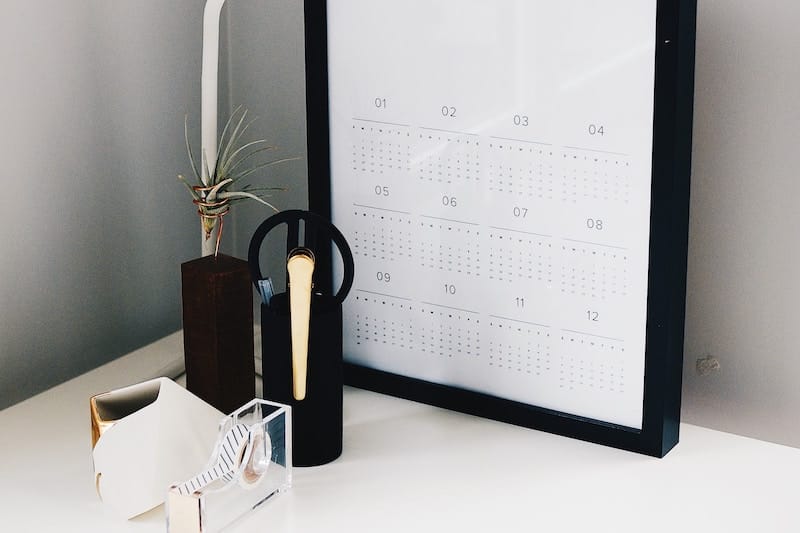
Before our mini-retirement, we were focused on building our finances. We were prepaying our mortgage, saving for vacations, contributing to a 401K, and building our emergency savings fund. Then we decided to temporarily step away from getting a paycheck for a full year. Our focus on our finances had to change. Here’s how:
Having the Money to Take a Mini-Retirement
We didn’t spend the last 10 years saving up $60,000 in order to take this mini-retirement.
Instead, we sold our home and moved into an apartment. This may seem silly, but we had been talking about downsizing for a while and we were ready to take the next step. Moving into a rental allowed us to experiment with living smaller and free up our equity. And this is what we are living on now, our equity.
You can tour our apartment at my blog about decluttering and minimalism. Here are links to our apartment tour - bedrooms, bathrooms, closets, kitchen, living & dining room, and garage.
Pre-Mini-Retirement Budget
Before this mini-retirement, I never thought about our living expenses holistically. I could tell you what my husband’s paycheck was and how we sorted the money into different categories - mortgage payment, bills, savings. From there, I spent our money on groceries, household care items, clothes, etc. I tracked everything in Thrifty but my only true goal was to not spend more than we had left.
While I was successful in not creating debt, I would find myself dipping into our emergency savings fund or vacation fund to pay off the credit card. So, we weren’t saving as much as we told ourselves we had.
I eventually got better at this, but our mini-retirement pulled me into a whole new level of financial discipline and intention (Tweet this ) .
Mini-Retirement Budget
Going into our mini-retirement, we knew we wanted to be very intentional. We had more than enough money from the sale of our home to live comfortably, but, ideally we wouldn’t spend everything. We wanted to be able to put some of that money back into a down payment for a smaller home.
We went back through our spending log on Thrifty over the past year. We were able to see exactly how much money we spent and how we spent it. With that data, we were able to create a future budget.
There were areas of our spending we decided to tighten. There were also new categories that came out of our research. We made a plan for things that had previously been in our miscellaneous category.
We added everything up for a 12 month period and decided on our budget for the whole year - $60,000. With that number set, we also decided we would try to stretch ourselves to spend $5,000 less. Can we do it?
Breaking It Down
Here’s how we did it:
Expenses come in all different shapes and sizes. Some things are weekly, bi-weekly, monthly, quarterly, and annually (which can be pretty random). This can make budgeting a mess, but we figured out a way to make sense of it all.
If you are wondering where our cell phone bill is, we don’t have one right now. Not because we don’t have cell phones, but because my parents are in the industry and have gifted us with being on their plan for free. I’m so grateful!
Now we can track our spending on a monthly basis. We still log everything we spend in Thrifty and about once a week we note our spending total in each category on a budgeting sheet.
At the end of the month, we compare our planned budget to our actual spending:
-
If we spend exactly on budget (rent is a good example). Then we’re good.
-
If we spend over on a category. We subtract the difference from next month’s budget to try and make up the difference. A good example of this is in July - we spent $2.99 over on our gas category, so we adjusted the August gas budget from $200 down to $197.01.
-
If we spend under on a category. We note the difference and move that money into a special savings account so we’re not tempted to spend it. We’re hoping to spend $5000 under budget at the end of the twelve months. That’s more than enough for Chris and I to go on a 10-year wedding anniversary getaway next summer! In just 4 months, we’ve already set aside $2000 in this account!
-
For annual expenses, we just subtract what we spent from the annual number. Our hope is that at the end of the twelve months we have not depleted those categories.
Still Learning and Experimenting
We are still learning a lot about our spending.
One thing we have learned is how much less you drive when you don’t have to get to work. We had no idea how much less driving we would be doing during the mini-retirement. Not driving to work every day and having the time to be able to walk more around our town has cut our gas consumption in half.
We have also started challenging ourselves to spend less in some categories.
Pizza Night: Can we do frozen pizzas from the grocery store (and stay within our grocery budget) instead of ordering out? Can we buy a carton of vanilla ice cream from the store as well instead of paying extra for specialty pints at the pizza place?
Date Night: Can we do a Date Day while the kids are in school instead of a Date Night and save money on a babysitter?
I’m excited to stay on this journey and see how we continue to grow in our thrifty lifestyle during this mini-retirement!
Do you create an annual budget? How do you do it?
